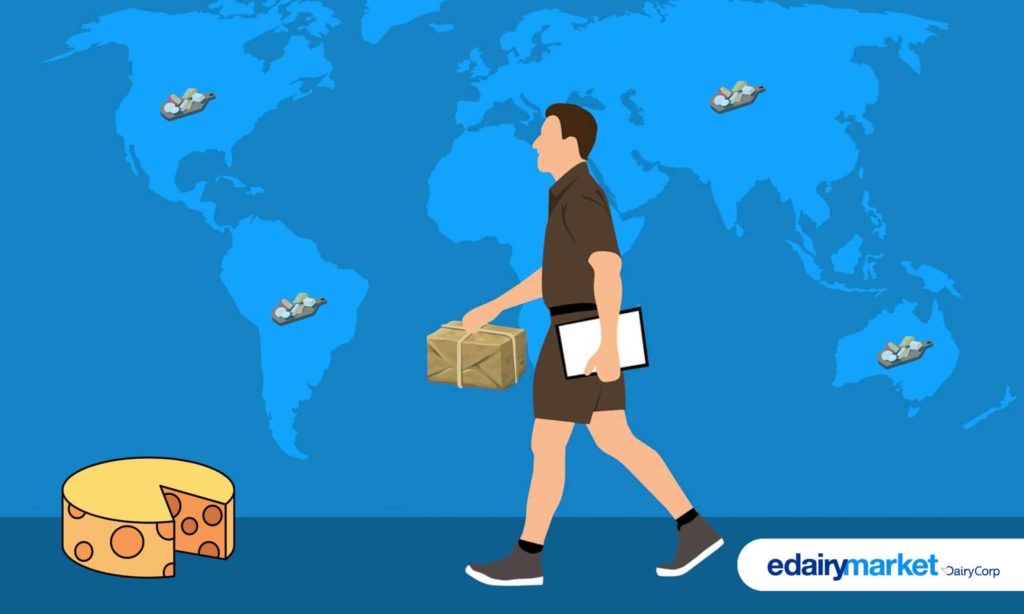
Indonesia’s president said to seek imports of live cows as a condition of bringing in dairy products.
A billion dollars in dairy exports to Indonesia are at risk of disruption from the country’s latest drive for self-sufficiency in food production.
Ahead of elections earlier this year, Indonesian President Prabowo Subianto promised to provide free meals to 80 million schoolchildren, lifting the country’s low dairy consumption and improve child health.
With just 16% of current milk consumption in the country coming from domestic dairy herds, much of the dairy products required for the programme were expected to be imported.
However, Indonesian importers have now been told that sourcing live dairy cattle will be a condition of licences to bring dairy products into the country.
The new condition has only been conveyed verbally but could be confirmed in writing as early as next week when licences for January and February imports are issued.
One insider said agents for New Zealand exporters risked being blindsided by the move.
What it means for the smooth continuation of the dairy trade with Indonesia is unclear.
“Importers would be like ‘What are we going to do with these cows? We have got nowhere to put them and we certainly don’t know how to milk them,’” the insider said.
Dairy Companies Association of NZ (DCANZ) executive director Kimberly Crewther said exporters are awaiting more details.
“We have not seen an official policy linking dairy product import permits to cow imports but are aware this may have been floated as an option in some discussions.
“We expect permits for dairy product imports from 1 January to be issued in the coming week.”
Crewther feared disruption to an important and fast-growing market that has nearly trebled from $385 million in 2016 to $996m last year
“Generally speaking, we look for trade in dairy products to be as frictionless as possible and in line with agreed provisions,” Crewther said.
Those provisions were set out under World Trade Organisation (WTO) rules and NZ’s 2010 free trade agreement with the southeast Asian countries of ASEAN, which include Indonesia.
DCANZ said Subianto risks undermining progress towards his goal of lifting per capita dairy consumption from 16.27kg, to being closer to near neighbours Thailand and Vietnam at 26kg, and boosting health outcomes in a country where a fifth of under-five-year-olds suffer from stunted growth.
Lifting the domestic dairy herd size from 260,000 to 1.5 million was also one of the new President’s aims, but this was expected to take a decade to achieve.
“Dairy product imports play an important complementary role to local production in supporting nutrition outcomes,” Crewther said.
If the new policy were to be confirmed it would not be the first time Indonesia’s drive for self-sufficiency in agriculture has disrupted a major export market for NZ farmers.
In the early 2010s Indonesia banned 80% of NZ’s beef exports to the country, which slipped from being NZ’s second largest beef market in 2011 to seventh in 2022.
At the WTO, NZ successfully challenged the ban estimated to have cost exporters a billion dollars in sales between 2011 and 2016.
Meanwhile, the ABC reports that 50 dairy heifers were flown from Sydney to Jakarta last week, specifically for the free school lunch programme.
The heifers were organised by the Consolidated Pastoral Company, one of the biggest cattle companies in northern Australia, with feedlots in Indonesia.
The animals were flown to Jakarta, trucked through Java, then barged across to Sumatra, and are now in CPC’s feedlot at Lampung.
CPC chief executive Troy Setter told NT Country Hour about the venture.
“We’re just working through whether we pasteurise or UHT that milk on site, or send it to what the government is calling ‘kitchens’, which are centralised processing hubs,” he said.
You can now read the most important #news on #eDairyNews #Whatsapp channels!!!
🇮🇳 eDairy News ÍNDIA: https://whatsapp.com/channel/0029VaPidCcGpLHImBQk6x1F

















